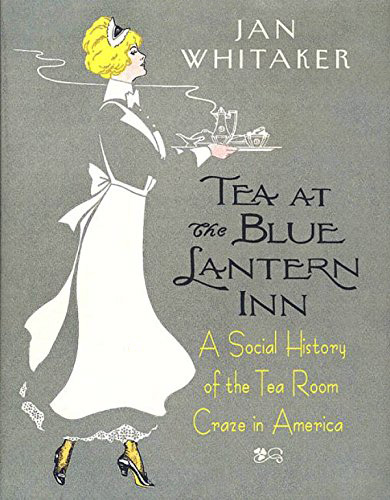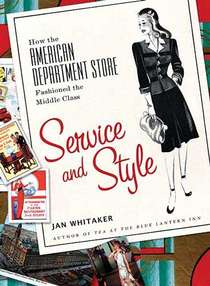In November, 1961, new Interstate Commerce Commission (ICC) rules took effect requiring all interstate bus terminals to integrate their lunch and waiting rooms. The new regulations went against Jim Crow laws in the South that required separate “white” and “colored” facilities.
Although travel on interstate buses had been integrated by the ICC in 1955, the regulations had not covered restaurants or restrooms in the terminals.
The new rules were issued just months after the Congress of Racial Equality organized “Freedom Rides” with groups of Black and white members who rode buses to Southern states — Alabama and Mississippi in particular — with the intention of challenging segregated bus station facilities. In May, 1961, the Freedom Riders were attacked by violent white mobs who beat them and firebombed one of their buses while it was stopped with a flat tire outside Anniston AL. [photo above]
 Twelve days after the ICC rules took effect a Black journalist, Bettye Rice Hughes, set out on a bus trip through the South to observe firsthand what had changed – and what hadn’t. She was a graduate of Lincoln University in Jefferson City MO where she majored in journalism. She and her husband, Albert Hughes, a photographer for the Associated Negro Press [ANP], lived in Los Angeles. She was a reporter for the ANP, but it is unclear if that was her job at the time of her tour. In 1964 she was editor of the women’s page of the San Francisco Sun-Reporter. That year she took part in a panel at a conference on Black writers sponsored by the University of California, Berkeley. In 1966 she left the Sun-Reporter and may have moved to New York City. I was not able to trace her any further than that. [photo: Bettye Jean Hughes at 1964 conference, talking with LeRoi Jones (Amiri Baraka)]
Twelve days after the ICC rules took effect a Black journalist, Bettye Rice Hughes, set out on a bus trip through the South to observe firsthand what had changed – and what hadn’t. She was a graduate of Lincoln University in Jefferson City MO where she majored in journalism. She and her husband, Albert Hughes, a photographer for the Associated Negro Press [ANP], lived in Los Angeles. She was a reporter for the ANP, but it is unclear if that was her job at the time of her tour. In 1964 she was editor of the women’s page of the San Francisco Sun-Reporter. That year she took part in a panel at a conference on Black writers sponsored by the University of California, Berkeley. In 1966 she left the Sun-Reporter and may have moved to New York City. I was not able to trace her any further than that. [photo: Bettye Jean Hughes at 1964 conference, talking with LeRoi Jones (Amiri Baraka)]
Her six-week tour took her through Oklahoma, Arkansas, Tennessee, the Carolinas, Florida, Georgia, Alabama, and part of Mississippi. Her story, “A Negro Tourist in Dixie,” was published in April, 1962, and continues to be read today.
The bus she took avoided going through all but a corner of Mississippi – where it made no stops – and her tour did not include Louisiana, the birthplace of segregated railroad travel.
In her report of the bus tour it’s clear that she is a close observer, paying attention not only to the reaction of white people to her, but also to the reaction of other Black people, on the bus and in the stations, including kitchen workers. Clearly she is an object of curiosity, but also hostility. “I felt that the threat of violence was always there – particularly in South Carolina, Georgia, and Alabama – but somehow it never erupted,” she writes. She is served in the lunch rooms, though often grudgingly. On a couple of occasions she has to insist on her right to eat in what were still considered by many to be “white” lunch rooms.
The first direct challenge to her presence in a lunch room came at a Greyhound station in Florence, South Carolina. There, the white cashier as well as a white counterman yelled at her to go to the station’s other lunch room, “the one for you.” She stood her ground, despite her growing fear, and succeeded in getting served, but the episode filled her with dread about the next stops. During the encounter, white patrons, she noted, were silent and “pointedly staring at their food.” In Tallahassee FL, the “problem” of serving her was solved by having a Black cook do it.
Throughout her experiences in lunch rooms she felt the eyes of Black travelers on her as much as those of whites, though evidently few dared to order food. She concluded her essay expressing hope that Black passengers would assert their rights in the future and that white Southerners would become accustomed to eating in lunch rooms with them.
I was curious about how lunch room integration proceeded in other parts of the South that she did not visit, and how things developed after her tour. I found that in quite a few cities officials refused to integrate, insisting that local Jim Crow laws took precedence over ICC rulings. The major of Shreveport LA put it bluntly: “We don’t care about the ICC.”
In Birmingham, the manager of the Greyhound cafeteria was fined and given a suspended sentence for allowing Black and white people to be served together. The manager of the lunch counter in the McComb MS bus station took down the signs indicating separate lunch rooms but refused to serve five Black customers in what had been the white room. When they began banging on the counter for service, a gang of white males ran in and attacked them as well as chasing off a TV cameraman.
In some cities and towns local authorities closed their bus stations’ eating facilities rather than integrate. Federal authorities stepped in and prevented Birmingham from closing its Greyhound restaurant. But in Crossett AR a lunch room closure left a Black woman traveling with a 2-year old stuck on a Continental Trailways bus with little food for two days in a snow storm. White passengers had found rooms in a local hotel, but the hotel told the Black woman they were full. After a radio station ran a story about their plight, Black families offered a room and neighbors brought “enough food for a banquet.”
By the time Bettye Hughes’ essay came out, it was generally possible for Black travelers to get a meal in a Southern bus station, though resistance continued in some places. An Associated Press story declared that Virginia and the Carolinas had accepted bus station integration, but Birmingham had integrated “in name but not in practice.” It also reported that Black people were staying away from bus station restaurants generally. They knew they still were not welcome.
© Jan Whitaker, 2020





 It's great to hear from readers and I take time to answer queries. I can't always find what you are looking for, but I do appreciate getting thank yous no matter what the outcome.
It's great to hear from readers and I take time to answer queries. I can't always find what you are looking for, but I do appreciate getting thank yous no matter what the outcome.



What an extraordinary lady Bettye Rice Hughes was. Her work should be noted close by all the new (and merited) thoughtfulness regarding the Green Book.
I applaud you for pointing out this part of our nation’s all too slow (and all too incomplete) journey towards civil rights.
Many people would like to forget that all of this is not ancient history, but within the lifetimes of many of us, and told to those younger than we are by those who endured it themselves. Racism is America’s original sin, one we have not yet figured out how to atone for.
Thank you, not ancient at all.
Is that Viola Davis from The Help…on the far left… she sure has her demeanor…lol
Good article though …
What an incredible woman Bettye Rice Hughes was. I knew nothing about this courageous journalist. Her work should be noted alongside all the recent (and deserved) attention to the Green Book.
Thanks, Marcia. I agree.
Thank you, Jan. It was pretty nasty stuff. As the senior collector in America of Miami memorabilia and Floridiana, I am the only person in the state who gives the talk titled “The History of Discrimination” in South Florida. That talk, which is half Jim Crow and half restricted clientele, is one of two (of my thirteen talks on South Florida local and Florida transportation history) talks which I give that are “adult show and tell” talks to which I bring the memorabilia–the booklets/brochures/postcards/photographs and signs to illustrate the topic. Among the pieces is the large, wooden “COLORED” sign from the FEC Railway station in downtown Miami, indicating the location of the separate waiting room for African-Americans. It was a terrible–and shamful–time in American history.
I’m glad you are doing it. It was shameful and it is painful to think there are Americans who would welcome that era’s return.
Oh, Jan, you have no idea what we go through with certain people. And not wanting to be or get political, I simply can not understand the expressed willingness of those individuals to want to take away other’s rights. “And in closing,” and just as a side note, as the senior collector in America (this past May started my 63rd year of collecting all this junque) of Miami memorabilia and Floridiana, I am pleased to state that we have the largest private collection (private as opposed to, for example, Miami’s Black Archives) of black Miami memorabilia in white hands in the country, including such as the original negatives of Dr. King in Miami, as well as other important African-American figures, as well as much more, of course.
Wow!
This takes me aback – I spent my teenage and university years in South Africa, at the time Apartheid was the way the country was run. No you would not find blacks, whites, indians, and coloureds (which has a whole different meaning in SA) eating in restaurants together in the 1950s/60s/70s. But during that time the USA was continually berating SA for its racist policies, now it turns out they were as bad if not worse in certain ways! Long distance buses were never used by whites anyway – they used cars, or the very efficient trains. The idea of black people being tourists within the country would be considered very strange. It was such a different world and time. When apartheid ended (prior to Mandela’s release from prison) all races accepted it immediately – everything changed, literally overnight. (Apart from a few die-hard idiots who took themselves off to the hinterland).
Interesting, parallel yet different. Black people had a hard time traveling in the U. S. too. There were many places closed to them and always the possibility of violence.
A very timely post. Thank you.